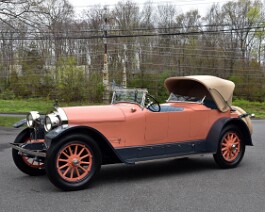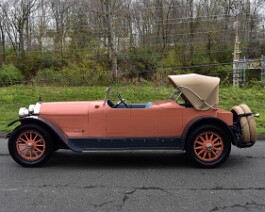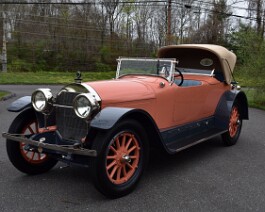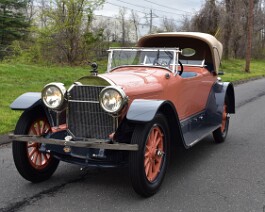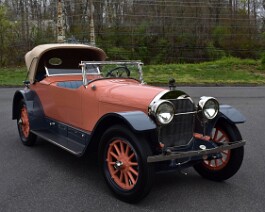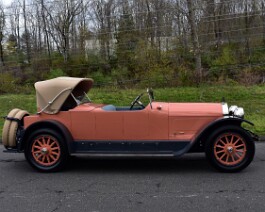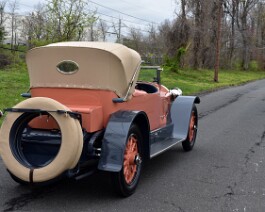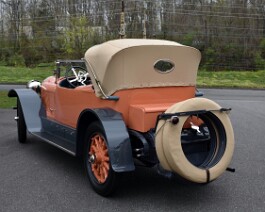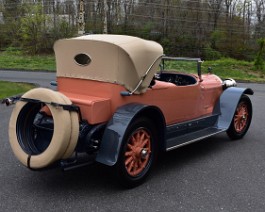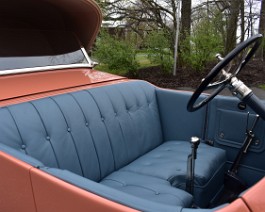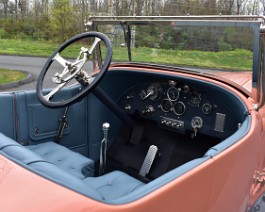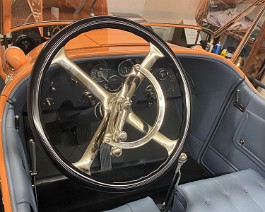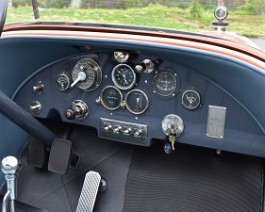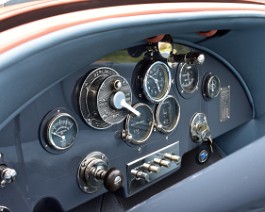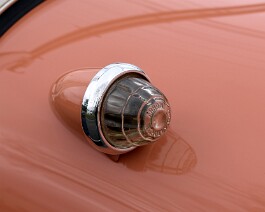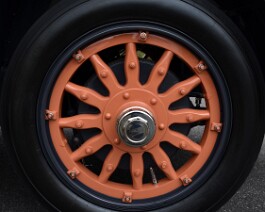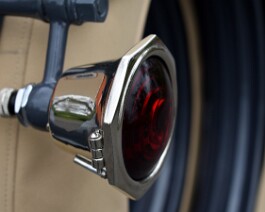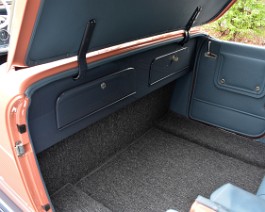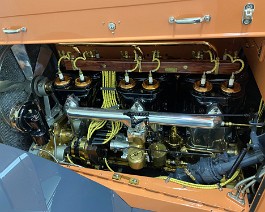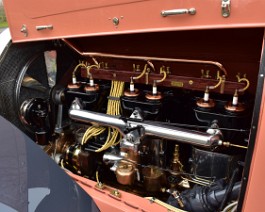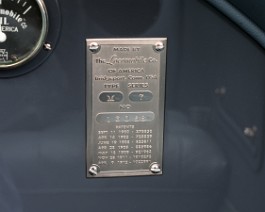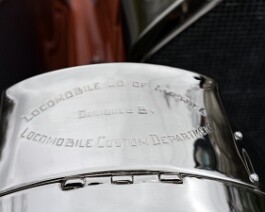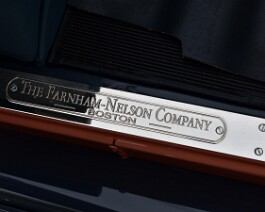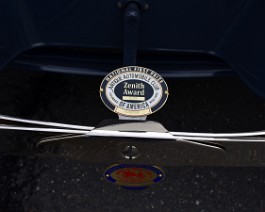1917 Locomobile Model 48 Dual Cowl Sportif Body By Farnham & Nelson
Inventory Number: 3069
Price on Request
- MODEL: 48
- TYPE: M
- SERIES: 7
- CHASSIS NO: 13058
- MANUFACTURED: Bridgeport, CT, USA
- ENGINE: T-Head 6-Cylinder with side valves
- COACHWORK: Rare dual cowl by The Farnham & Nelson Company from Boston, MA
- HP: 48
- IGNITION: Berling
- GAUGES: Warner Auto-Meter, Westinghouse Electrical Meter, US Gauge Co.
- MOTOMETER: Boyce (The MotoMeter Co.)
- AWARDS: National First Prize, Antique Motorcycle Club, Zenith Award 2021 (W34749); Best in Show 2022 Klingberg Motor Series Show, and Best in Show & Best Restoration at The John Martins Foundation 8th Annual Car & Tow Truck Show 2024
Until 1903, they manufactured small, affordable steam cars. Despite being described by author Rudyard Kipling as “nickel-plated fraud” and prone to kerosene fires, Locomobile sold over 4,000 unreliable steam-powered runabouts with seven different body styles. They were the first automobiles to be used in war, joining the British in the second Boer War where they were used to dismantle a minefield and even to serve tea by tapping the boiler.
Andrew L. Riker designed a quickly-successful four-cylinder, steel-chassis internal combustion-powered luxury car in 1902 and pivoted production, selling the rights to the steam vehicle back to Stanley. Riker came from experimenting with his Riker Electric Vehicle Company, which he sold to Colonel Albert Augustus Pope in 1901. The Stanley twins would go on to found the Stanley Motor Carriage Company, becoming Locomobile’s closest competitors. First, they offered 2-cylinder engines, then evolved to large 4-cylinder T-Head engines and chain drive gearboxes. By 1908, George Robertson had won the Vanderbilt Cup with a 90 HP F-Head Locomobile, making the company famous as the first American-made manufacturer to win an international competition. From then on, Locomobile was known as “The Greatest Car Built in America”, the “Rolls-Royce” of the United States, not just because of their fame but because they created some of the highest-quality vehicles of their time. Riker entered Locomobiles into multiple endurance races and even the Grand Prix circuit, becoming competitive in the United States and Europe.
In 1911, the prestigious Type M was introduced, known more commonly as the Model 48 for its 48HP, with an open body, large chassis, straight six T-Head engine with side valves, 103 HP, signature bronze crankcases, and impeccable workmanship and materials. They came with a hefty pricetag, starting at $5,000 and going $10,000 (over $330K in 2025) by the end of their run in 1925, and offered custom lamp and metalwork from Tiffany Studios. This was the pinnacle of Locomobile’s creations, once again designed by Head Engineer Andrew Riker. The Model 48’s chassis was so well-designed and ahead of its time that it would remain unchanged until the end of production. Throughout the Model 48’s production run, many of the world’s wealthiest and most famous people chose the Model 48 as their mode of Transportation, including members of the Vanderbilt family, William Wrigley, William Carnegie, and many other famous people.
Most 48s had factory coachwork later designed by Frank DeCausse, who had previously worked as the designer for Kellner of Paris, but some were ordered as a bare chassis and sent to a custom coachbuilder. One of the most coveted, rarest, and most famous of all the custom coachwork ever to adorn the Model 48’s chassis would most certainly be the dual cowl designed by Farnham and Nelson of Boston, Massachusetts. With its narrow body sporting a low waistline, an incredibly short and rakish windshield, and, of course, the signature cape top over the rear compartment, this design is nothing short of perfect. Only three Farnham and Nelson-bodied Locomobiles survive today, and none were ever offered publicly for sale.
Orin Davis won the Los Angeles-Phoenix rally with a Locomobile in 1913, but Locomobile did not make much more of an impression in racing history, although Eva Mudge chose the Locomobile as her race car. She is believed to be the first female to hold a driver's license, race a car, and also to get into an accident. Locomobile joined the war effort again in 1917, selling the Riker Truck to the British army, and contributing more vehicles to WWI than any other American company.
Durant Motors Inc., led by Billy Durant, former CEO of General Motors, acquired Locomobile in 1922 and continued producing the Model 48. They came out with their own Locomobile 8-66 Junior Eight with a straight-eight engine and a much lower pricetag along with several other vehicles until they placed a Lycoming engine in the 8-70 of 1927, damaging the Locomobile name. Production ended in 1929, despite trying to save the company’s reputation with new 8-86 and 8-88s, after the stock market crash.
Locomobiles were known to be speedy, well-built luxury cars, revered for their precision engineering and beautiful craftmanship. It’s no wonder Locomobile Automobile Co. used the slogan, “The Best Built Car in America.”
Click here for "The 1917 Locomobile Story".

